The Africa Twin is back. Well and truly. Honda’s legendary big-bore off-road adventure bike has returned in a serious way for 2016 – and you can believe the hype.
There’s a lot to talk about here. The offering of a dual-clutch automated manual gearbox is a key point. The inevitable questions over the electronic nannies and the balance between on-road comfort and off-road capability demand answering too.
But first the obvious stuff:
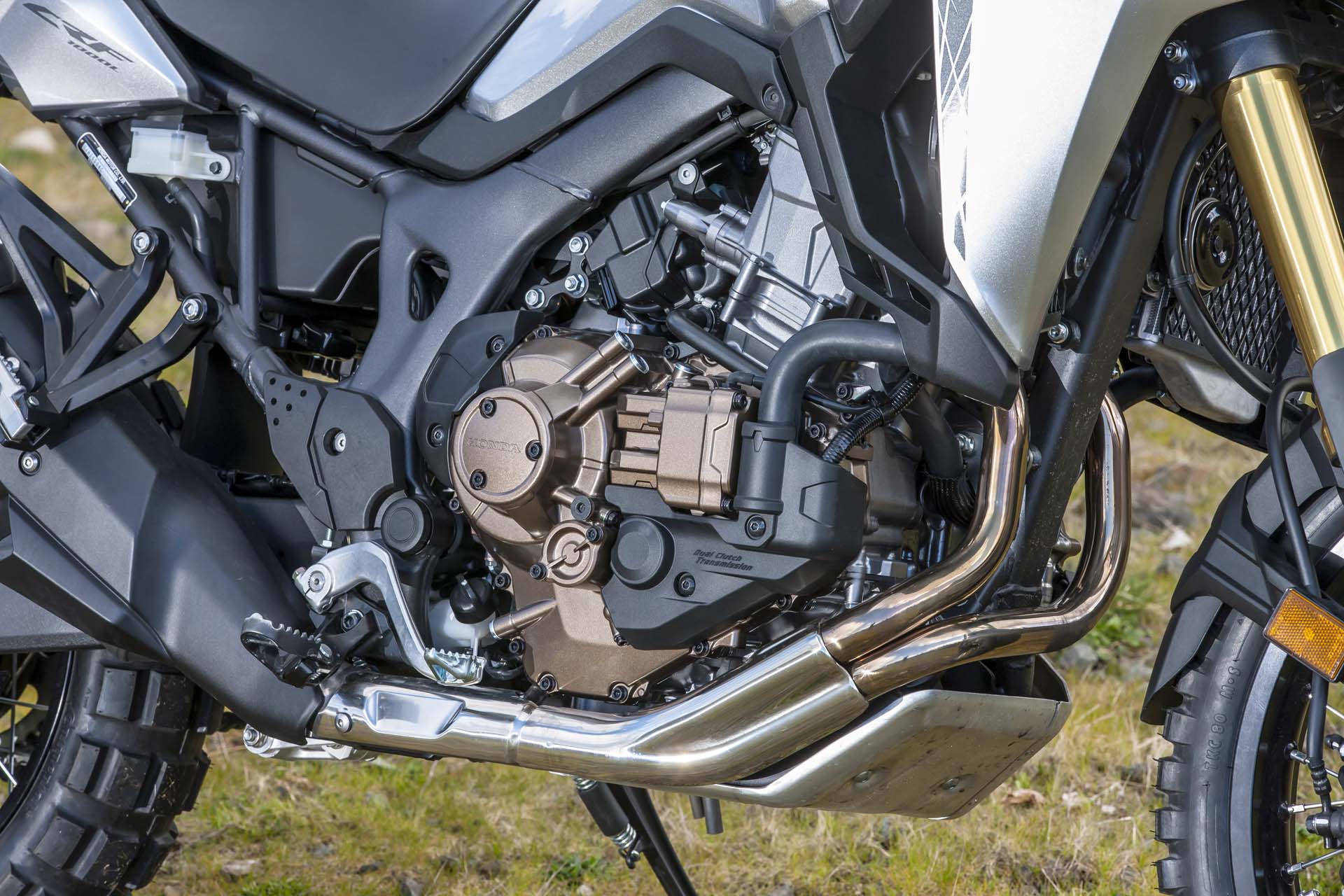
The 2016 Honda CRF1000L Africa Twin is powered by a 998cc in-line twin (its predecessor was a V-twin, but this is not, because packaging). The engine is good for 93 hp at 7,500 rpm and 72 lb-ft of torque available at 6,000.
There are four spark plugs – each cylinder gets two – and for packaging/weight saving, the engine is a single-overhead cam unit. Thea 270-degree crankshaft is used in part to mimic the V-Twin feel of old and it gives the Africa Twin a pulsing, hypnotic note and rhythm. The exhaust has been tuned to further enhance that pulsing rhythm – look closely and you’ll notice the exhaust tips are even different diameters.
The entire bike weighs 228 kg with the double-cradle steel frame spreading that weight 49.1/50.9 front/rear. It’s also all mounted low – really low.
There are two gearbox options, a conventional manual and a dual-clutch automated manual (DCT).
Tech talk over. Let’s play.

First order of business is to adjust the seat down from 870 mm (standard) to the lowest possible 820 mm setting – an easy feat that took seconds. Adventure bikes and short folk like me don’t always get along so me clambering astride the Africa Twin was hilarious for my colleagues.
Once aboard, the ergonomics of the bike begin to really impress. The narrow seat and airbox cover/fuel tank allow you to get well forward over the centre of the bike and the high, wide bars fall to hand easily and provide confident feedback. Standing upright for off-road sections the Africa Twin really shone, and as a relative (okay, complete) novice to this style of riding I found the Honda felt far more comfortable than expected. There was no warm-up period, no settling in – the Africa Twin feels natural immediately.
The engine delivers power smoothly and cleanly. The manual gearbox is slick and smooth – a slipper clutch helping with the downshifts. The bike was described by one colleague as “the most foot-steerable bike” he’s been on and I’d have to agree.
Inputs via the foot pegs have instant results and the big bike feels far smaller out on the road. Or off the road as the case may be. There’s an amazing amount of balance here that novices will enjoy for its confidence and experts will adore for its performance.
How hard can you play?
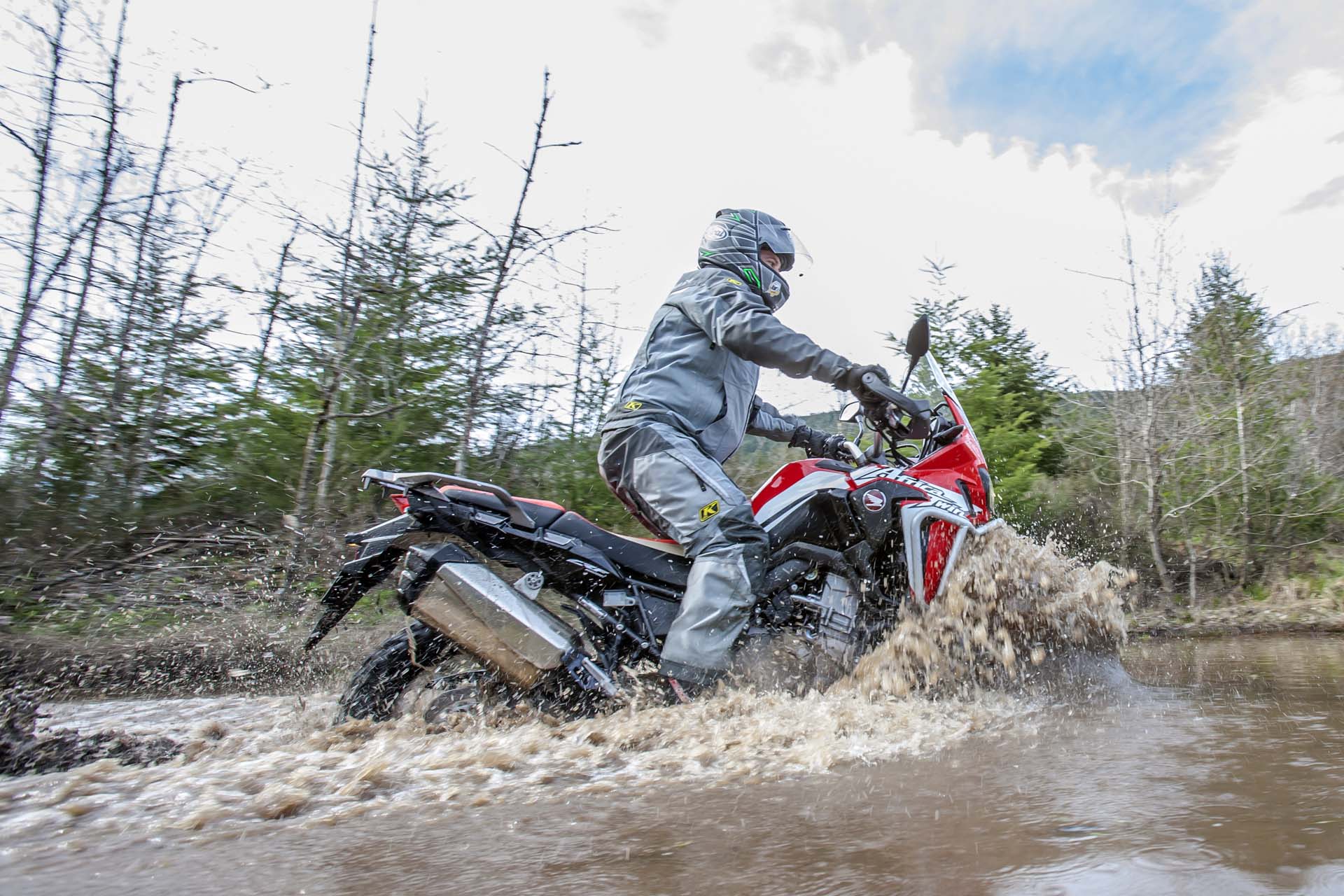
I mentioned that off-road riding is something I’m new to, so I played around on the easy stuff while some of the hard-core dirt guys went running amok in the bush. While I forded a little river, clambered over some logs and frightened myself on a trail of grapefruit-size stones, they decided to throw the Africa Twin at the sort of terrain usually reserved for CRF450s and the like.
The 250 mm of ground clearance allowed me to take the Africa Twin through more than a foot of water while the 1,575-mm wheelbase meant the huge-looking bike was cheerfully agile on the trail.
Large potholes and bumps were dispatched with nonchalance by the 230 mm of travel offered by the 45 mm upside-down Showa forks and the 220 mm available from the rear shock. Pre-load, damping and rebound are all adjustable and the rear shock features a remote reservoir. The wheels are the same 21-inch front and 18-inch rear size as the CRF450R Rally.
If there’s a trail you want a crack at, the Africa Twin is up for the task.
Feeling at home
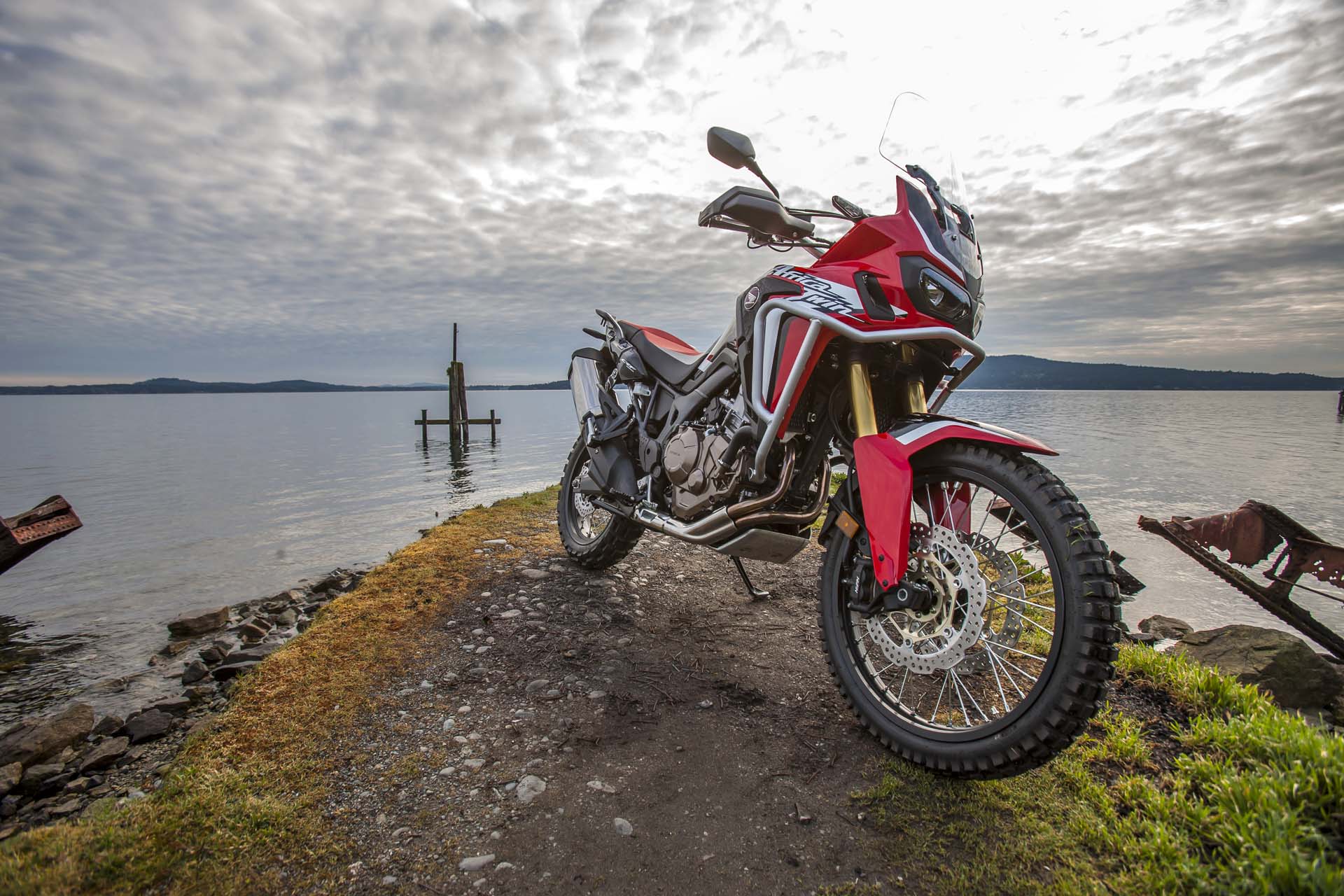
Impressive as that all was, the loose gravel and slick clay logging roads were a revelation. There the composed, balanced and smooth Africa Twin carved a skier’s dream of smooth parabolic arcs up the mountain, me standing upright all the while and feeling like an off-roading god. The big engine lazily hauled bike and rider up to stunning elevations and here I really began to play with the four-stage traction control. Level 3 is too intrusive, but the first level allows a healthy amount of slipping to allow more throttle steering and to give you a boost up hills. If you’re really brave, you can disable traction control altogether.
The bike is available with ABS too, but the rear wheel ABS can be entirely turned off, to allow more control on slippery descents where a locked rear wheel builds up a little mound of dirt and actually helps arrest your descent. Or, if you’re a complete hero, allows you to back the Africa Twin wildly into the corners on the brake.
Yeah, but what about the DCT?!?
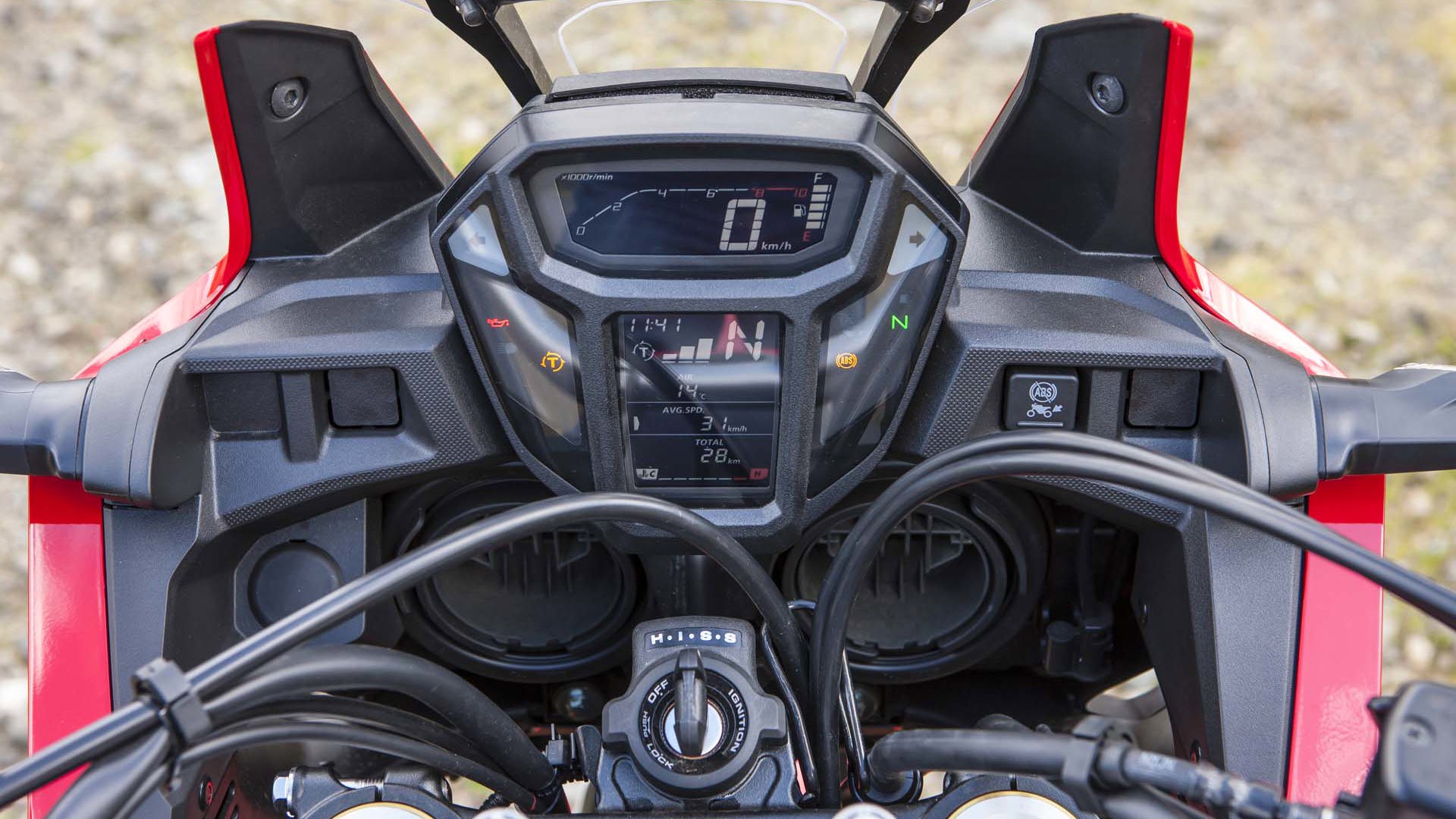
I know, you want to know if the DCT on the Africa Twin is any good, right? Are automatics going to take over motorbikes too now? Well, yes and no. The DCT gearbox is amazing, that much is true. Honda has done an amazing job of programming the box to be where you want it, when you want it. Especially if you choose the sportiest of the three shift patterns available. They’re all selectable by a button on the right handlebar, it’s also how you get the bike into drive before you set off. There is a handbrake on the left lever because the bike goes back to neutral when the ignition is off – this is a critical thing to remember!
It feels strange not to shift for a while but you will get used to it. The most awkward sensation is take-off, where long-time riders are used to feeling a little clutch slip before the bike takes off smoothly; the DCT unit is ready to rock immediately. It makes take off feel slightly jerky purely because it’s easy to be caught off guard.
There is a “G” mode, which uses a bunch of sensors including an incline detector to determine how much engine braking, how much wheel spin and clutch slip and how many revs are required to perform what you need. It comes into its own most on hills, especially muddy hills where the DCT does all the work of feathering the clutch and managing traction you usually manage with your left hand.
The DCT will even let you bounce the front up a little on throttle to clear a log or a large rock in your path. The only barrier to riding the DCT bike the same way as a manual was my confidence. Sometimes it’s hard to give up old habits.
You can shift the DCT with your forefinger and thumb; forefinger for up, thumb for down. Pay attention however: I spent 300 metres trying to shift down by cancelling my indicators – then I hit the horn before I finally found the right button (it’s the one on the very bottom of the controls).
With the possible exception of big smoky burnouts there’s nothing you can’t do on a DCT bike that you can on a manual – and Honda wouldn’t let me put that to the test anyway. In fact, I found it easier to perform some tasks, like fording the pond and climbing a muddy hill, on the DCT bike.
All killer no filler
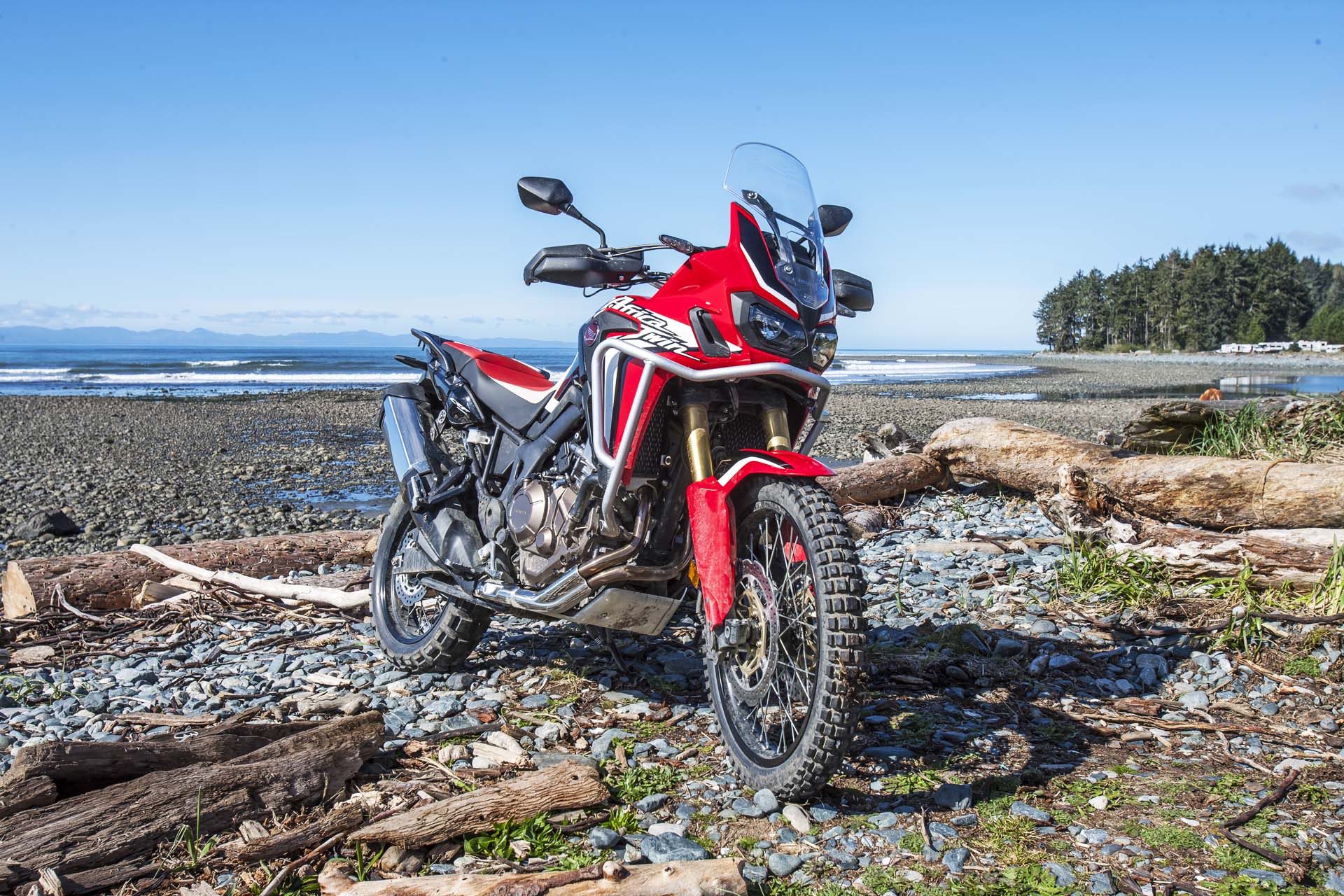
It’s a shame the only colour available on the automatic unit is a rather dull silver. The red black and white of the manual unit available for our test is stunning.
If you’re a novice looking for fuss-free access to adventure riding that is capable to take you past your comfort zone and back home the Africa Twin will impress – especially equipped with the DCT.
If you’re an expert looking for a big bike to swallow miles that will still allow you to take on tough trails when you spot them, the Africa Twin might be the jack of all trades you’ve been looking for.

































































